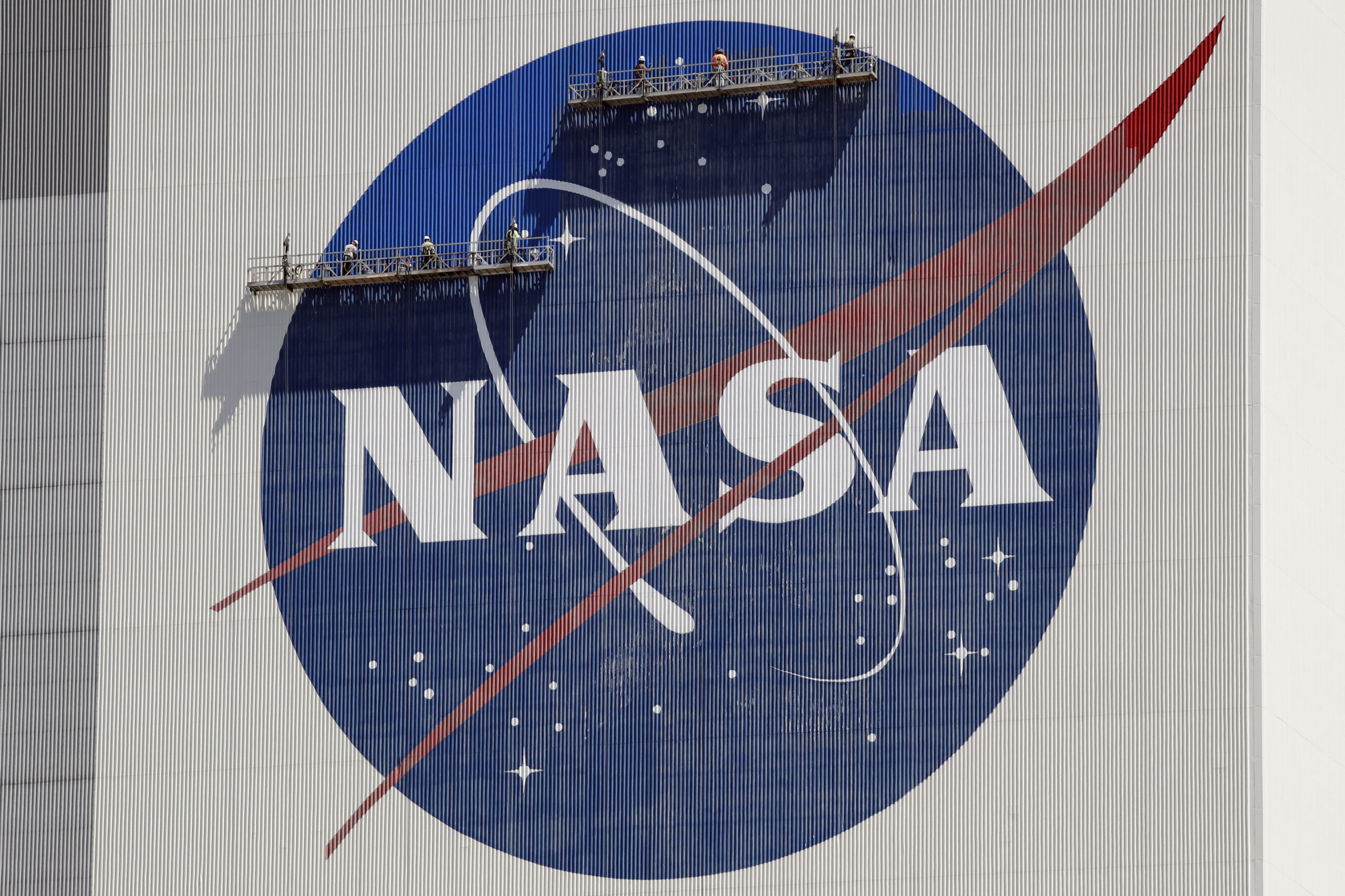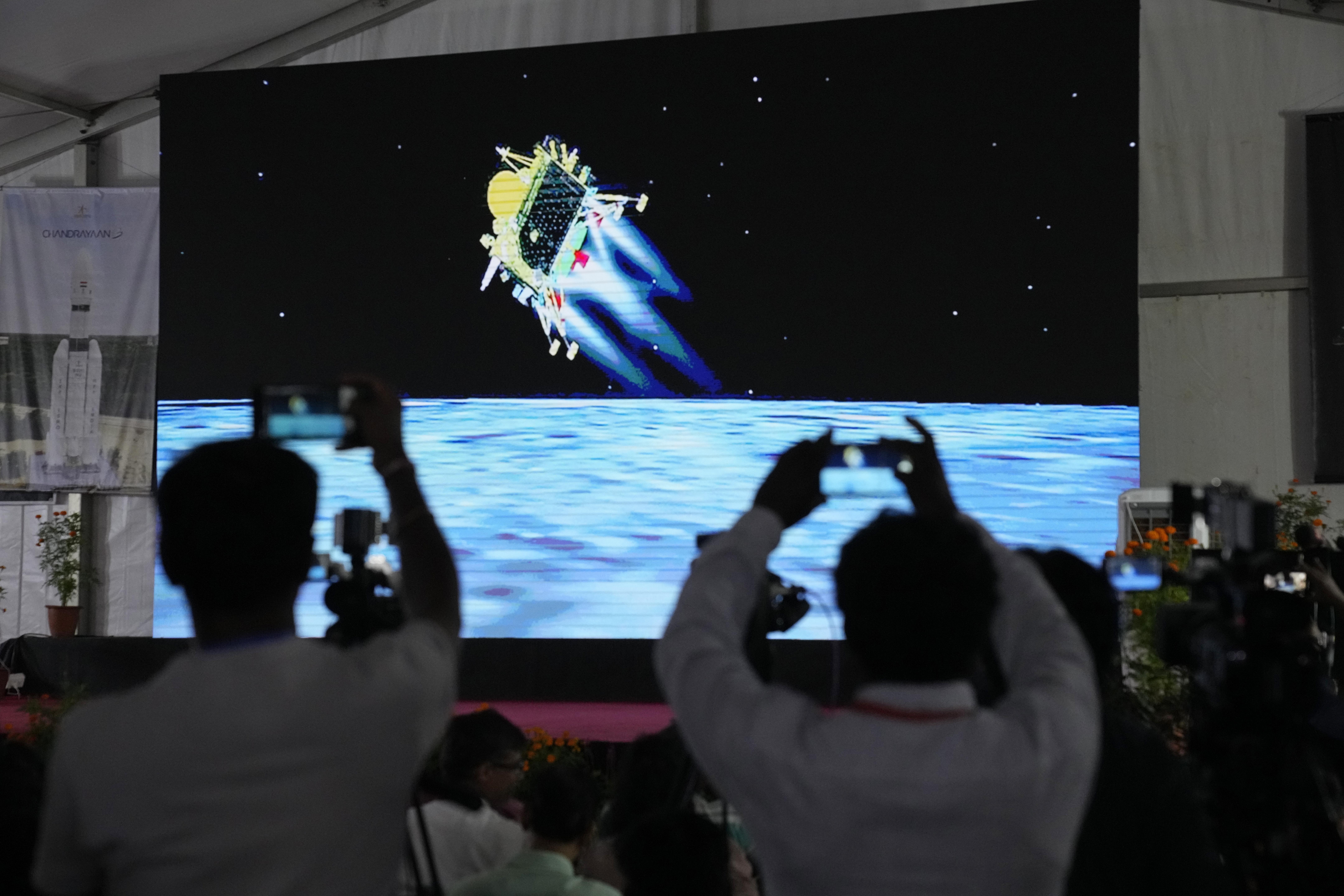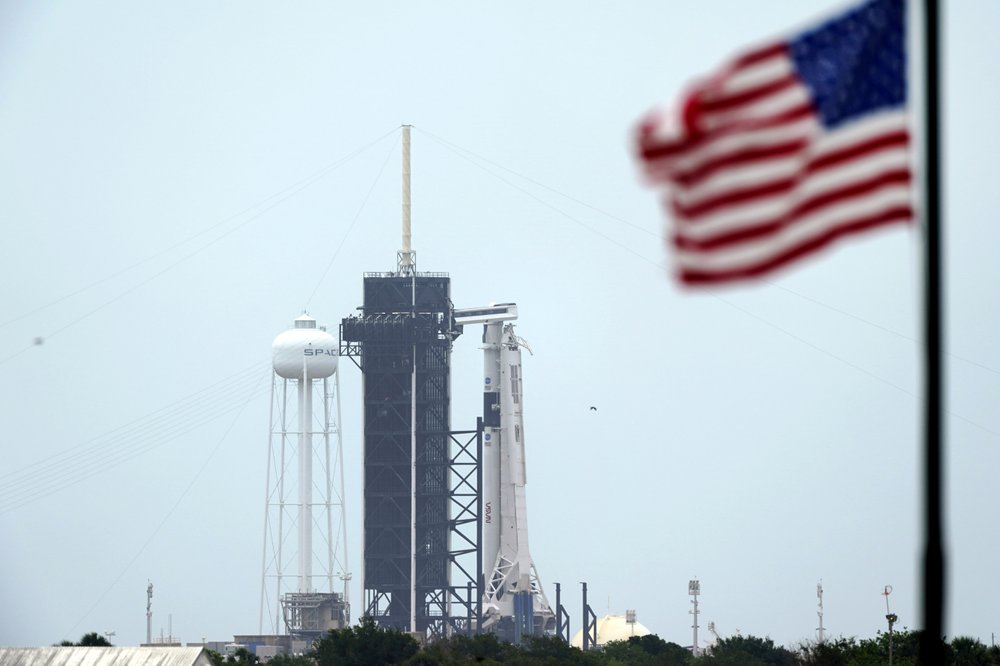It’s back to the future as NASA astronauts launch again from the U.S. — aboard a retro-style “Right Stuff” capsule.
Make no mistake: This is not your father’s — or grandfather’s — capsule.
SpaceX’s Dragon crew capsule outshines NASA’s old Apollo spacecraft in virtually every way. The Dragon’s clean lines and minimalist interior, with touchscreens instead of a mess of switches and knobs, make even the space shuttles seem yesteryear.
This fresh take on a vintage look will be on full display Wednesday when SpaceX plans to launch NASA astronauts Doug Hurley and Bob Behnken to the International Space Station — a first for a private company.
It will be the first astronaut launch from Florida since Atlantis closed out the space shuttle program in 2011, and the first American-made capsule to carry people into orbit since the Apollo-Soyuz mission in 1975.
A SpaceX Falcon 9 rocket — with the crew capsule atop — will soar from the same pad used for both of those earlier missions.
Russia’s workhorse Soyuz capsules, still in use after a half-century plus, have kept NASA astronauts flying to the space station. While reliable, the Soyuz looks dated compared with the snappy Dragon.
“We want it to not only be as safe and reliable as you’d expect from the most advanced spacecraft in the world … we also want it to look amazing and look beautiful,” said Benji Reed, a SpaceX mission director.
SpaceX and Boeing, NASA’s other commercial crew provider, opted for capsules from the start.
Another early competitor, Sierra Nevada Corp., proposed a small space plane for astronauts, but did not make the final cut. NASA has since hired the company to haul space station supplies aboard its mini shuttle starting as soon as next year.
There was no need for another flying machine like the shuttle, which was built to haul hefty satellites and space station parts, said retired NASA manager Steve Payne.
“What we’re trying to do now is just taxi service up and down, and you don’t need the huge semi anymore. You can use a sedan,” Payne told The Associated Press.
“Yes, wings are nice. They give you more options as to where to land and a little more control,” said Payne, a former Navy fighter pilot. “But they’re not absolutely necessary. And since we’re trying to make this inexpensive and reusable and as simple as we can make it so that it’s cost effective, capsules work.”
SpaceX based its crew capsule on its long-running reusable cargo capsule, also named Dragon and ending space station missions with old-fashioned splashdowns.
The two astronauts were deeply involved in the new capsule’s development over the past five years. In true test flight fashion, they offered suggestions and tweaked here and there, to benefit not just themselves but future crews.
“Our goal through this entire process is to not turn the spacecraft into Bob and Doug’s excellent machine, with a bunch of things that only Doug likes or only Bob likes,” Behnken said.
Although the full automated Dragon has four seats lined up in a row, only the center two will be occupied for this especially risky test flight. A test dummy soloed on last year’s Dragon crew capsule debut.
This Dragon now has a name, courtesy of its crew. Hurley and Behnken promise to reveal it on launch day, one of many traditions they’re setting into motion as NASA’s commercial crew program finally takes wing.
The practice hearkens back to NASA’s early days: Project Mercury’s John Glenn became the first American to circle the Earth aboard Friendship 7; Gemini 3′s Gus Grissom and John Young sailed into orbit aboard Molly Brown; and Apollo 11′s Neil Armstrong, Buzz Aldrin and Michael Collins flew to the moon aboard Columbia.
“We have to save some suspense for the mission itself,” Behnken said. “We’ve got something for you to look forward to on launch day.”
Related Stories
‹

Far Out: NASA Space Telescope’s 1st Cosmic View Goes DeepWritten by SETH BORENSTEIN Our view of the universe just expanded: The first image from NASA’s new space telescope unveiled Monday is brimming with galaxies and offers the deepest look of the cosmos ever captured. The first image from the $10 billion James Webb Space Telescope is the farthest humanity has ever seen in both […]

NASA Releases UFO Report and Says More Science and Less Stigma Are Needed To Understand ThemWritten by MARCIA DUNN NASA said Thursday that the study of UFOs will require new scientific techniques, including advanced satellites as well as a shift in how unidentified flying objects are perceived. The space agency released the findings after a yearlong study into UFOs. In its 33-page report, an independent team commissioned by NASA cautioned that the negative […]

Astronauts Answer CHCCS Students Questions From Space to Help Promote STEMSome Chapel Hill-Carrboro City Schools students taped questions and heard live responses from the International Space Station on Wednesday.

India Lands a Spacecraft Near the Moon’s South Pole, a First for the World as It Joins Elite ClubWritten by ASHOK SHARMA and KRUTIKA PATHI India on Wednesday made history as it became the first country in the world to land its spacecraft near the moon’s south pole, an uncharted territory that scientists believe could hold vital reserves of frozen water, and the fourth country to achieve a moon landing. A lander with […]
![]()
Bam! NASA Spacecraft Crashes Into Asteroid in Defense TestWritten by MARCIA DUNN A NASA spacecraft rammed an asteroid at blistering speed Monday in an unprecedented dress rehearsal for the day a killer rock menaces Earth. The galactic slam occurred at a harmless asteroid 7 million miles away, with the spacecraft named Dart plowing into the space rock at 14,000 mph. Scientists expected the […]

UNC Team Shares 'Game-Changer' Research on Black Holes, Dwarf GalaxiesEditor’s Note: This article has been updated to better reflect the research completed by the Kannappan team, including the timeline of their methodology’s testing and prevalence of black holes in dwarf galaxies. Last week, people around the world were enamored by the first photos from the James Webb Space Telescope, which showed the […]
![]()
China Launches Main Part of Its 1st Permanent Space StationWritten by SAM McNEIL China on Thursday launched the main module of its first permanent space station that will host astronauts long term, the latest success for a program that has realized a number of its growing ambitions in recent years. The Tianhe, or “Heavenly Harmony,” module blasted into space atop a Long March 5B rocket […]
![]()
NASA Launches Mars Rover to Look for Signs of Ancient LifeThe biggest, most sophisticated Mars rover ever built — a car-size vehicle bristling with cameras, microphones, drills and lasers — blasted off Thursday as part of an ambitious, long-range project to bring the first Martian rock samples back to Earth to be analyzed for evidence of ancient life. NASA’s Perseverance rode a mighty Atlas V […]

SpaceX on Cusp of Launching Astronauts, Back on Home TurfSpaceX was on the cusp of launching NASA astronauts into orbit Wednesday, a first for a private company and a giant leap forward for the booming business of space travel. The planned afternoon liftoff to the International Space Station will be the first of Americans from the U.S. in nearly a decade. Riding aboard the […]
![]()
NASA Astronauts Go Back to the Future With Capsule LaunchIt’s back to the future as NASA astronauts launch again from the U.S. — aboard a retro-style “Right Stuff” capsule. Make no mistake: This is not your father’s — or grandfather’s — capsule. SpaceX’s Dragon crew capsule outshines NASA’s old Apollo spacecraft in virtually every way. The Dragon’s clean lines and minimalist interior, with touchscreens instead of a […]
›







